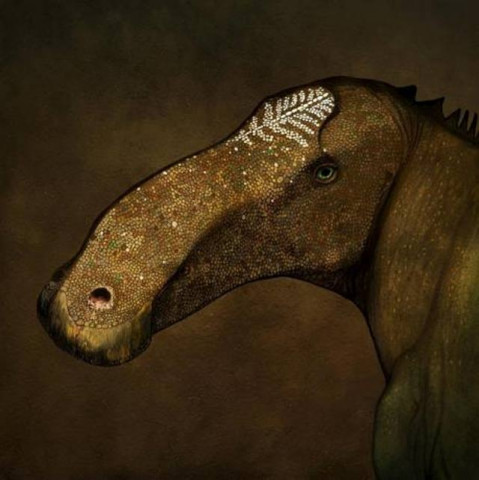'Superduck' dinosaur provides insight into elaborate head crests
It is a perfect example of evolution within a single lineage of dinosaurs over millions of years

Undated handout illustration courtesy of paleoartist John Conway shows the Probrachylophosaurus bergei dinosaur. PHOTO: REUTERS
Scientists on Wednesday announced the discovery of fossils of the dinosaur they named Probrachylophosaurus bergei that was about 30 feet long, weighed more than 5 tons and donned a small, triangular bony crest atop its skull.
Double trouble: asteroid, volcanoes implicated in dinosaur doom
It was a member of a plant-eating group called duck-billed dinosaurs, known for beaks resembling a duck's bill, common during the latter part of the Cretaceous Period.
Many duck-billed dinosaurs boasted head crests of various shapes and sizes. Probrachylophosaurus, one of the earliest with a prominent crest, offers insight into the evolution of these features, the researchers said.
Its skull bones are very similar to those of Acristavus, a duck-billed dinosaur from about 81 million years ago thought to be its ancestor, and Brachylophosaurus, which lived about 78 million years ago and is thought to be its descendant.
Watch your mouth: Allosaurus had monstrously gaping jaws
"Acristavus does not have a crest. The top of its skull is flat. Brachylophosaurus has a large, flat, paddle-shaped crest that completely covers the back of the top of its skull," said Elizabeth Freedman Fowler, curator of paleontology at the Great Plains Dinosaur Museum in Malta, Montana.
"It is a perfect example of evolution within a single lineage of dinosaurs over millions of years."
Paleontologist Jack Horner of Montana State University and the Museum of the Rockies added, "Because the fossil record is very spotty and we only get glimpses of evolutionary trends, it is always exciting to find evidence of transitional species."
Alarming research: Sixth mass extinction is here, US study
Freedman Fowler said she gave Probrachylophosaurus (pronounced pro-BRAH-KEE-loh-foh-saw-rus) the nickname "Superduck" because it was pretty big for a duck-billed dinosaur, although not the largest.
Growth rings in its leg bones, akin to annual growth rings in trees, showed it was 14 years old, still not fully grown.
"We think that the crests of dinosaurs were visual signals so that they could recognize members of their own species, and also tell whether the animal was mature or not," Freedman Fowler said.
Unsafe habitat: Gorals on brink of extinction
The scientists unearthed most of its skull, its pelvis, hind legs, vertebrae and ribs near the north-central Montana town of Rudyard. They unearthed less-complete remains of a second Probrachylophosaurus, more of an adolescent in age.
The research was published in the journal PLOS ONE.


















COMMENTS
Comments are moderated and generally will be posted if they are on-topic and not abusive.
For more information, please see our Comments FAQ